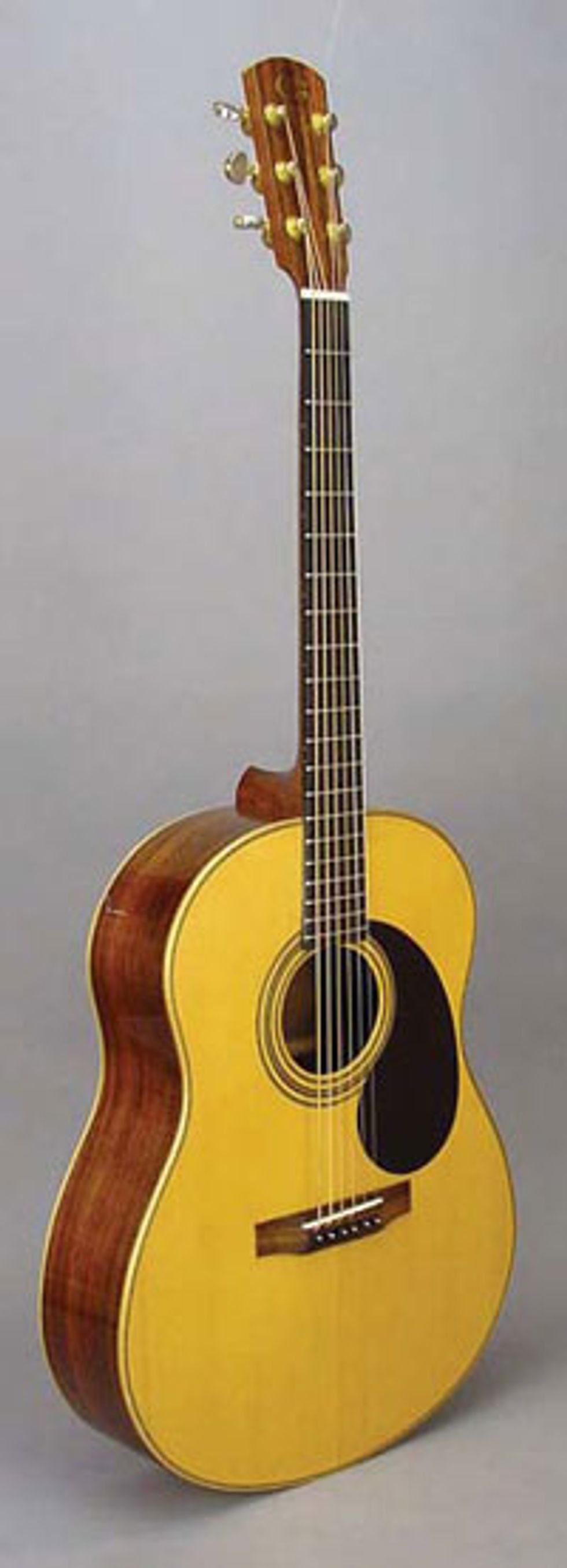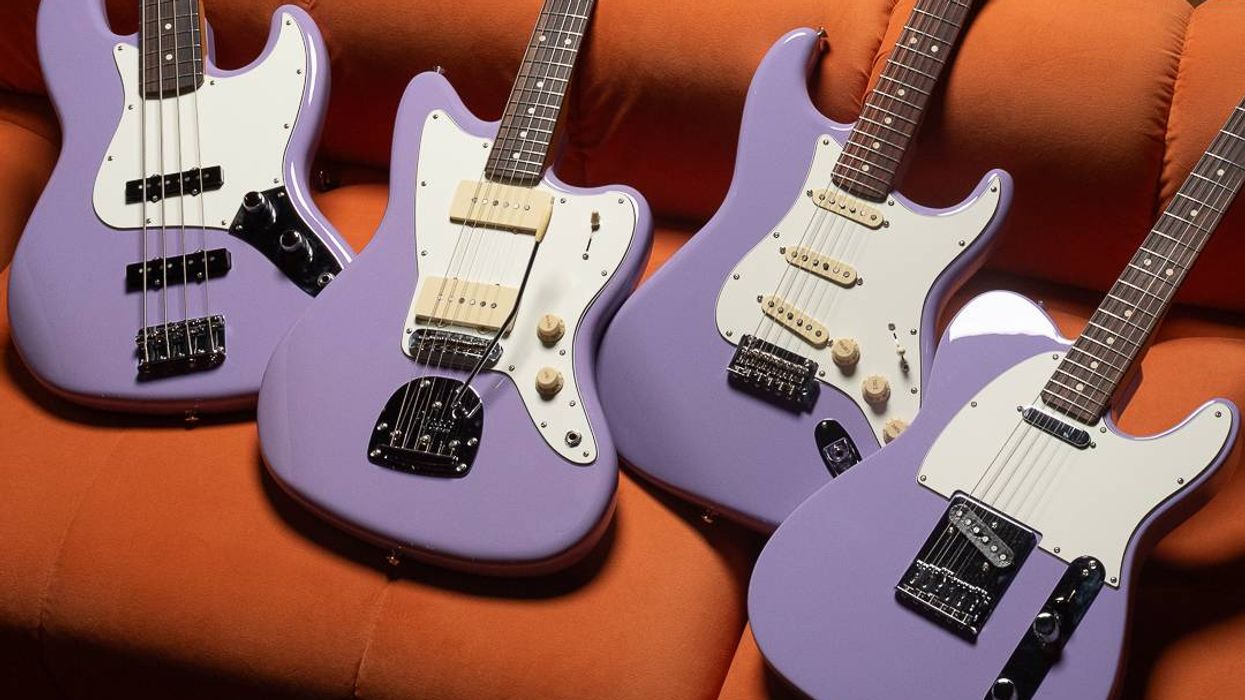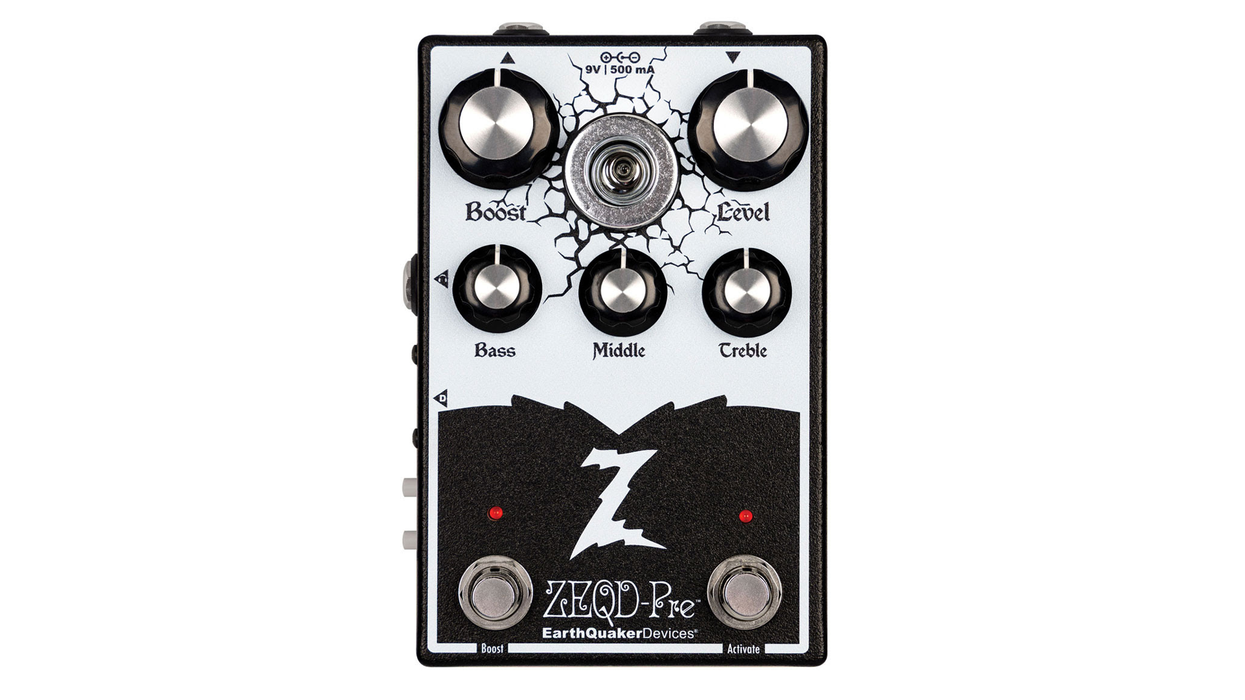 Though known for his beautiful steel-string flattops, Michael Gurian began his career building classical guitars. This elegant 1973 Gurian sports Brazilian rosewood back and sides and reveals the luthier’s classical roots. Photo courtesy of Frank Ford and frets.com |
Acoustic-guitar styling has taken on a new look over the past two decades. There’s a modern look to the body shapes, with their soft shoulders and rounded bouts. The tops are white as can be, and rosettes have become more and more artistic. Plastic bindings have evolved into wood of all kinds, with purfling treatments that beautifully contrast with the body. Exotic woods from all over the world are used for the sides and backs, and fretboards are often clean and modern looking, with few inlays. In many ways, when it comes to binding treatment, rosettes, and blank fretboards, the steel-string guitar has taken on the aesthetics of the classical guitar.
Good luthiers are designing their own trade dress, using distinctive bridge shapes and peghead shapes. I see creativity coming out like never before. Even the guitars that are inspired by traditional instruments have a more elegant, refined look with their tops sitting proud in an arch that would not have appeared before our big World Wars. Guitar makers are figuring out a better design, and most of them are heading down a similar path—the path of sophistication.
It’s refreshing to me—not only the quantity of the makers, but the quality of their work. I’ll say our work, because I’m among those whose guitars display a more sophisticated design than guitars did five decades ago.
You can see the influence of computerization even in handmade guitars. Lasers and CNC machines have allowed inlay design to become more advanced. Many handbuilders buy parts from suppliers that use CNC machines, and some might use CAD programs to draw their designs.
Nevertheless, the current inlay trends reflect the influence of technology. It’s funny to think about, but it once was the computerized machines’ task to copy the old handmade designs, but now many handcrafters are copying the aesthetics introduced by people who use modern techniques.
When I started, there weren’t many people working alone, building guitars. The steel-string guitar companies that existed included Martin, Gibson, Guild, Larrivée, Gurian, Loprinzi, Mossman, and NBN, but some of those are no longer with us.
When I look at the nose-dive that acoustic guitars took after about 1979—when the disco craze hit the scene—I have to think that, even though Taylor was selling a lot of guitars, the industry was not so healthy.
There was no way for a would-be guitar maker to learn the craft, even as recently as the 1970s. There was but one book explaining how to do it, no place to buy supplies, and you had to make your own tools. I’ve always said that a good way to measure the health of an industry like guitar making is by gauging the tools, supplies, and know-how that exists within the industry.
When I started, people were buying a lot of guitars. But they came only from factories. There was no way for the individual maker to enter the market like there is today. As more and more tools, supplies, and knowledge spread, people were more easily able to get started making their first guitar, and many of them were incredible craftsmen.
When I look at the nosedive that acoustic guitars took after about 1979—when the disco craze hit the scene— I have to think that, even though Taylor was selling a lot of guitars, the industry was not so healthy. If it were healthy, then perhaps a new musical genre would not have harmed it so much. I’m not sure if I’m right, but our current guitar-market condition sure feels a
lot stronger to me this time. And I can’t help but notice that part of the reason I feel that way is because of how many people are involved in building and selling their own ideas.
Sure, many of these people you see advertising their guitars make only 10 or 15 guitars in a year, but I think their contribution goes a long way when you add it up. All together, they add up to hundreds or thousands of guitars. But more than that, their designs and ideas inspire the group as a whole. Even if you only look at their ads, those photos of guitars begin to alter your perception of what a guitar style should be, and that causes you to expect more from the factories you buy guitars from.
I think we’re living in a wonderful time to buy and play guitar. There are so many great choices. Vintage guitars and vintage-styled guitars are selling in record numbers, as are the newest designs. It all seems pretty healthy to me this time around.
 Bob Taylor is the cofounder and president of Taylor Guitars. He built his first guitar as a teenager and has since gone on to establish Taylor Guitars as one of the world’s premier acoustic, acoustic/electric and electric guitar manufacturers.
Bob Taylor is the cofounder and president of Taylor Guitars. He built his first guitar as a teenager and has since gone on to establish Taylor Guitars as one of the world’s premier acoustic, acoustic/electric and electric guitar manufacturers.







![Rig Rundown: John 5 [2026]](https://www.premierguitar.com/media-library/youtube.jpg?id=62681883&width=1245&height=700&quality=70&coordinates=0%2C45%2C0%2C45)








